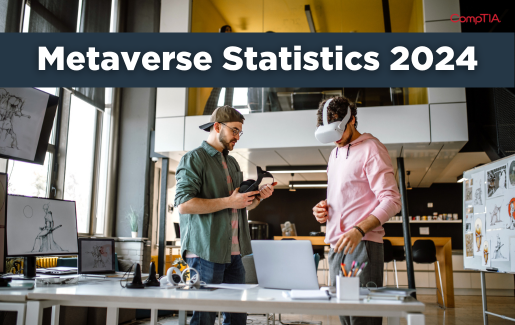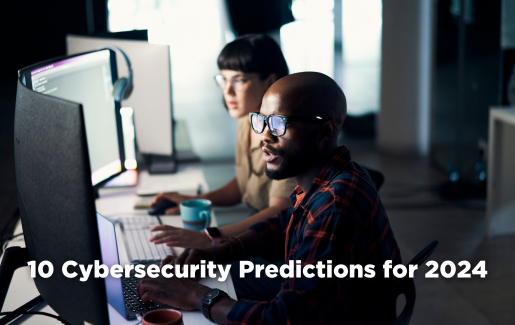 Few outside the blockchain industry will be familiar with the name Satoshi Nakamoto, but it is the pseudonym for the person (or people) who developed the first Bitcoin software, launched the concept of cryptocurrency and devised the first blockchain database.
Few outside the blockchain industry will be familiar with the name Satoshi Nakamoto, but it is the pseudonym for the person (or people) who developed the first Bitcoin software, launched the concept of cryptocurrency and devised the first blockchain database.
To date, it is unknown who or what Nakamoto is. He/they is/are rumored to hold nearly one million Bitcoin, which despite the fluctuating nature of the currency would make him/them a billionaire. Speculation has grown to “his” identification, but nobody has ever come forward.
Key Blockchain Statistics for 2024
There appears to be no simple definition of blockchain. It is commonly described as an advanced database mechanism that allows for transparent information sharing within a network. The blockchain database literally stores data in blocks that are linked together in a chain, meaning data is chronologically consistent because nothing can be deleted or modified down the chain without consensus from the network.
This is invaluable for organizations wanting to create an unalterable or immutable ledger for tracking orders, payments, accounts and other transactions and is the engine behind cryptocurrencies. Many believe blockchain will be a key driver of the metaverse and Web3.
Here are some blockchain stats, facts and trends for 2024.
Related Content: 7 Myths About Blockchain – Busted
What Is the Blockchain Market Size?
According to MarketsandMarkets the global blockchain market was around $7.4 billion in 2022 and is set to generate revenue over $94 billion by the end of 2027 with a compound annual growth rate (CAGR) of 66.2%. North America is currently the dominant region in the global blockchain market.
Statista forecasts that worldwide spending on blockchain solutions will reach almost $19 billion by 2024, while Gartner estimates that the technology will generate a business value of approximately $3.1 trillion by 2030 with blockchain-based systems potentially governing 10% to 20% of the global economic infrastructure.
Statista also reports that the financial market accounts for over 30% of the complete blockchain market, but other fast-growing verticals include manufacturing, agriculture, distribution and services and the public sector.
PwC claims that 61% of companies are now placing digital transformation initiatives at the top of their list of growth priorities and blockchain helps to address rising demand for better security and transparency in business.
What Are the Different Types of Blockchain?
There are four recognized types of blockchain networks:
- Public blockchain: Anyone with an internet connection can become part of a blockchain network and can access current and past records. A public blockchain is for mining and cryptocurrency exchange such as Bitcoin (BTC) and Ethereum.
- Private blockchain: A centralized platform with some restrictions and permissions to join the network. These are used within an enterprise and/or organization. Its purpose is voting, supply chain management, digital identity, asset ownership, etc.
- Hybrid blockchain: A combination of both public and private blockchain. This model gives businesses the flexibility to choose what data they want to be public and what they want to keep private.
- Consortium blockchain: A group of businesses, each with a private blockchain, decide to band together to share information and improve existing workflows, transparency and accountability.
The 5 Pillars of Blockchain
According to Gartner there are five elements (or pillars) of blockchain:
- Distribution: Participants are located physically apart from each other and are connected on a network. Each participant maintains a complete copy of a ledger that updates with new transactions when they happen.
- Encryption: Blockchain uses technology such as public and private keys to record the data in blocks securely and semi-anonymously. Participants can control their identity and share only what they need to.
- Immutability: Completed transactions are cryptographically signed, time-stamped and added to the ledger. Records cannot be changed unless all participants agree.
- Tokenization: Transactions and interactions in a blockchain involve the secure exchange of value in the form of tokens, which can represent anything from financial assets to physical assets. Tokens also allow participants to control their personal data.
- Decentralization: This means no single entity controls all the computers or information or dictates the rules thanks to a consensus mechanism on the distributed network.
How Is Blockchain Being Used Today?
Here are some examples of where Blockchain is growing in popularity:
- Healthcare: Blockchain technology is being used to track and trace prescription medications throughout supply networks and is helping in the fight against the distribution of counterfeit pharmaceuticals. Vantage market research predicts the healthcare blockchain market will reach $1189.8 million by 2028 with a CAGR of 61.3%.
- Smart contracts: Can be between individuals, or organizations. Because smart contracts bind all parties to a document legally, blockchain is increasingly being used by the legal sector for the creation of contracts, wills and other legally binding documents.
- Supply chain management: Blockchain helps with the real-time tracking of commodities and products as they travel through different points of a supply chain. It is a growing market for distribution and logistics companies.
- Protection of copyright and royalties: In the music/film/content creation industries blockchain offers real-time royalty distribution statistics and makes it easier to apply copyright regulations at the start of a ledger, ensuring everyone gets what they are owed.
- Voting: by using smart contracts and encryption, blockchain can make voting safer, more transparent and more private for voters which is why governments are looking closely at the technology.
- Cryptocurrency: Crypto such as Bitcoin, Ripple and Ethereum are the most well-known blockchain applications, used daily in global transactions. Consumers use crypto via digital wallets and can pay for almost anything including property or ride shares, parking fees and groceries, plus so much more. In 2021 Finances Online reported there were 68 million blockchain wallet users globally.
- Internet of things (IoT): The IoT is comprised of millions of connected devices that gather valuable data on everything ranging from weather patterns to rush hour traffic volumes, and even to individual power usage in the home. Blockchain ensure the data received by IoT devices is only visible to trustworthy parties.
- Asset management: Blockchain offers an alternative approach to asset administration, whether this is real estate, stock, commodities or other investments; and can eliminate both the intermediary and the possibility of inaccuracies or errors.
- Anti-money laundering: Blockchain can offer risk analysis and reporting tools to prevent money laundering. Because every transaction is permanent and unalterable, the origins of a transaction can be easily traced by authorities. This is why adoption of blockchain is growing among organizations in the financial sector.
What Are the Disadvantages of Blockchain?
Because blockchain technology is relatively new, the so-called disadvantages include common barriers to entry and adoption. This is par for the course when it comes to emerging technologies. As it exists today, the following disadvantage of blockchain are:
- A general lack of understanding on how it works
- Lack of regulatory and legal/tax/accounting frameworks, which means the technology is prohibited in some countries and regions
- Unclear financial reporting and compliance
- Complexity means more user-friendly interfaces are needed to help with adoption
- High costs of implementation
- Scalability is a question mark
How Sustainable Is Blockchain?
Blockchain can help in sustainability efforts as it can offer transparency and traceability in supply chains and allow customers to verify the origins and sustainability of the products they are buying.
Smart contracts (see above) can reduce the need for extensive paperwork, eliminating paper wastage and can streamline operations.
But blockchain also has an environmental downside due to the need for high-powered systems to constantly be mining, minting and validating transactions. The vast amount of data it creates needs to be stored in data centers – all of which amounts to a huge consumption of power. According to New Scientist in 2022, Bitcoin mining alone has been responsible for 200 million tons of CO2 since its launch.
How Secure Is Blockchain?
There are mounting concerns over blockchain security, particularly as the technology is perceived to be more susceptible to a 51% attack. This is where cybercriminals manage to gain control of more than half of the total hashing power of the network and override the consensus mechanism.
The biggest example of this was PancakeBunny in May 2021 which resulted in over $200 million of lost cryptocurrency assets. Cybercriminals can steal security keys and transfer assets from wallets that are native to a system, and they can invalidate new transactions and modify new blocks.
Other blockchain security concerns include:
- Privacy: Particularly with public blockchains which are vulnerable to monitoring and tracking because transactions are visible.
- Endpoint security: As a blockchain grows, so does the number of endpoints, meaning risk increases.
- Malware and phishing: As with any link, users should keep private keys safe and be wary of suspicious looking links or communications.
- Centralization: The majority of blockchains are centralized, meaning a small group of individuals or organizations control the majority of the network which could lead to security breaches.
- Governance: A perceived lack of governance around blockchain makes it challenging to make choices about the direction and upkeep of a network, resulting in conflicts and security risks.
How to Minimize Blockchain Risks
There’s a lot of potential to use blockchain technology for good – but all new technologies come with new risks.
IT professionals should take the following into account:
- Work with trusted IT security advisors/MSPs to ensure networks are protected.
- Work with industry groups that inform and warn of latest security trends/threats.
- Learn more about the blockchain market and ensure staff are educated on all security risks and threats.
Blockchain technology is a complex concept with many layers. However, the need to fully understand blockchain and how it works isn’t as great as the need for organizations to make decisions about investing in blockchain applications based on cost, security and agility.
Want to Learn More about Blockchain?
Join CompTIA’s Technology Interest Group!

 Add CompTIA to your favorite RSS reader
Add CompTIA to your favorite RSS reader

